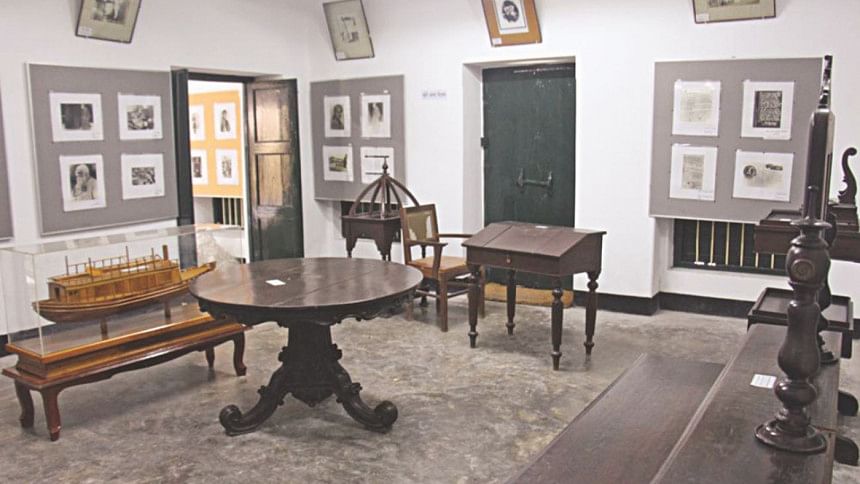Rabindranath's Shahzadpur legacy

In 1890, when he was 29 years old, Rabindranath Tagore first came to Shahzadpur (now under Sirajganj district) from Kolkata to supervise his family estate. Prince Dwarakanath Tagore, grandfather of Tagore bought the estate of Shahzadpur at a cost of Taka 13.10 when it was sold off at an auction in 1840. Tagore came there several times between 1890 and 1895. In the rainy season, he would board a boat -- and in the dry season, he traveled in a palanquin.
Years back, when I was there, I saw a number of Tagore memorabilia, including shoes, wooden sandals, a bedstead, couch, spectacles, palanquin, sofa, piano, harmonium and different metallic objects inside the Kachharibari that is a two-storey building, quite a simple architectural delight itself. There are seven rooms inside the Kachharibari.
The poet created many literary masterpieces – “Noukadubi”, “Sonar Tori”, “Chitra” and “Chaitali” (poetry); “Bishorjon” (drama), “Chhinnapatra” and short stories including, “Postmaster” and “Panchabhoot-er Diary” during his stay at the place.

In 1999, a Rabindra Auditorium, accommodating 500 seats, was constructed. There is also a museum where many rare photographs, furniture and metal vessels have been preserved. The museum is open from 9am-6pm everyday (except Sundays) for visitors.
Observing the plight of the country-people, especially that of the peasants, Tagore thought of initiating a self-reliant village economy, through boosting local initiatives, local leadership and local self-governance through cooperative systems. Besides being a poet, painter and philosopher, Tagore started innovative research on agriculture and rural development in Shahzadpur, Shilaidah (under Kushtia district) and Patisar (under Naogaon district). This spoke of his vision and commitment to the people around him. In a world dominated by technology and science, his thoughts are still relevant as he wrote: “Science has given man immense power. The golden age will return when it is used in the service of humanity.”
Tagore stood against exploitation and injustice in order to rise above geopolitical, economic and ideological divides. His messages can serve as a vital source of inspiration for tolerance, cultural harmony and peace.

 For all latest news, follow The Daily Star's Google News channel.
For all latest news, follow The Daily Star's Google News channel. 



Comments